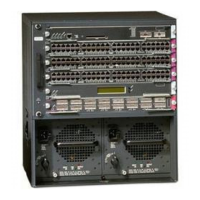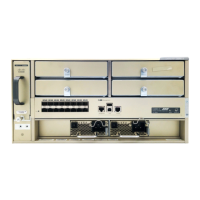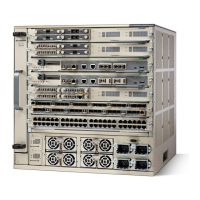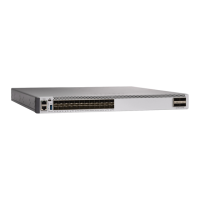© 2013 Cisco and/or its affiliates. All rights reserved. This document is Cisco Public Information. Page 28 of 28
Where MEC delivers the biggest effect is in response to a link failure. Flows in an MEC are assigned according to
a hashing mechanism determined by the hardware of the device sending the flow into the MEC. If a link in the
MEC fails, the convergence time is in the order of milliseconds. Even the most advanced Spanning Tree
Protocol, Rapid Spanning Tree, takes a few seconds (at best) to recover a link failure. The delay-sensitive
applications traversing the enterprise cannot withstand multisecond outages without restarting in many cases.
Deploying MEC in the backbone of the unified access campus architecture is essential to maintaining the level of
availability and reliability demanded by voice, video, and collaboration applications.
Quad-Supervisor SSO
Most customers who follow the
best practice of using MECs for all of the devices connected to a VSS will usually
not require more than a single Supervisor Engine 2T in each chassis of the VSS. With a single Supervisor Engine
2T in each chassis of a VSS, the failure of the Supervisor Engine 2T will result in the affected chassis being offline
until the failed Supervisor Engine 2T can be replaced. This primarily affects any devices that are not dual-attached
(such as a single NIC), as well as service modules only installed in the affected chassis. For many customers that
require the highest level of network availability, the ability to use two Supervisor Engine 2Ts in each chassis of a
VSS, also known as quad-supervisor VSS SSO, is a must. The Cisco Catalyst 6500-E with Supervisor Engine 2T
and Cisco IOS Software Release 15.1(1)SY1 and newer software support this capability. Figure 27 shows a
comparison in recovery times between a VSS with a single Supervisor Engine 2T in each chassis versus a VSS
with two Supervisor Engine 2Ts in each chassis.
Figure 27. VSS Recovery Comparison: One Supervisor Engine 2T Compared to Two Supervisor Engine 2Ts in Each Chassis
In a traditional VSS, a failure of the single Supervisor Engine 2T in one of the chassis will result in the available
bandwidth of the VSS being cut in half for an indeterminate amount of time. While there is a subsecond SSO
switchover between the two chassis, there is no in-chassis redundancy. This means that the VSS will operate on
the single remaining chassis until the failed Supervisor Engine 2T can be replaced. How long that will be depends
on whether or not a replacement is on site, how far away the site is, what the Cisco SMARTnet
®
Service contract
replacement details are, and so on.
In a VSS with quad-supervisor SSO capabilities, there is an in-chassis standby hot Supervisor Engine 2T in each
of the chassis of the VSS. This means that SSO is now supported within the chassis as well as between the two
chassis of the VSS. If the active Supervisor Engine 2T in the chassis fails, the in-chassis standby hot Supervisor

